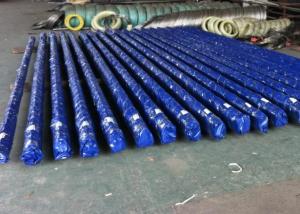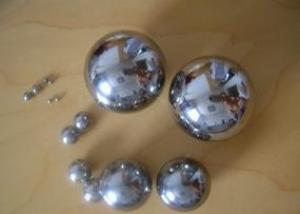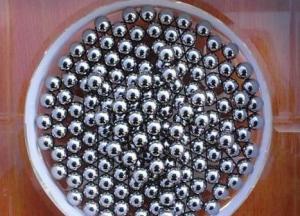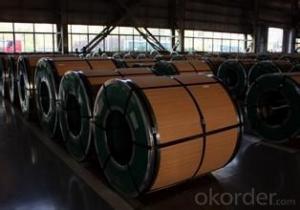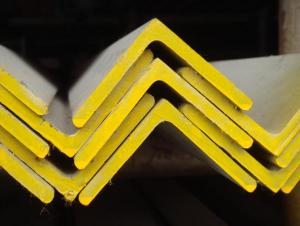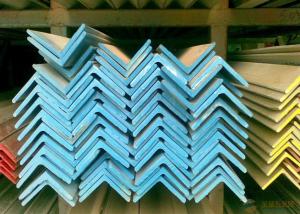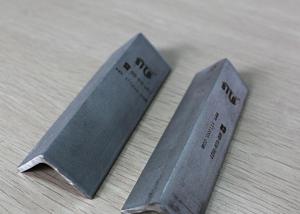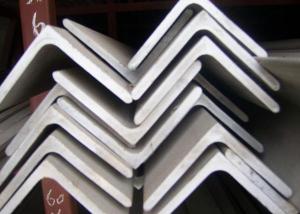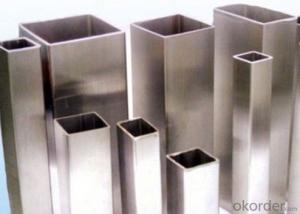Best Quality for Equal Stainless Steel Angles
- Loading Port:
- China Main Port
- Payment Terms:
- TT or LC
- Min Order Qty:
- 1 Ton m.t.
- Supply Capability:
- 500 Tons Per Month m.t./month
OKorder Service Pledge
OKorder Financial Service
You Might Also Like
Stainless Steel Angles
General Information of Stainless Steel Angles
1. Grade: SS200, 300,400 series
2. Size: 25×25×3 mm-100×100×10mm
3. Process: HRAP
4. Length: 2-6m
5. Shape: Equal
6. Delivery: within 20 days
7. MOQ: 1 ton
8. Certificate: ISO 9001:2008, SGS
9. Package: Standard Export Packing, or put into wooden boxes according to your requirement
10. Application: Construction, Marine, Industry and so on
Specification of Stainless Steel Angles
Name | Stainless Steel Angles | |||||
Standard | ASTM A554, A312, A249, A269 and A270 | |||||
Material Grade | 304,316,201,202, 316L,430 | |||||
Length | 6m or as customers' request | |||||
Tolerance | a) Thickness: +/-0. 15mm | |||||
b) Length:+/-4. 5mm - 0mm | ||||||
Surface | 180G, 320G, 400G Satin / Hairline(Matt Finish, Brush, Dull Finish) 400G, 500G, 600G or 800G Mirror finish | |||||
Application | Decoration construction, upholstery, industry instruments | |||||
Test | Squash test, Extended test, Water pressure test, Crystal rot test, Heat treatment, NDT | |||||
Chemical Composition of Material | Composition Material | 201 | 202 | 304 | 316 | 430 |
C | ≤0.15 | ≤0.15 | ≤0.08 | ≤0.08 | ≤0.12 | |
Si | ≤1.00 | ≤1.00 | ≤1.00 | ≤1.00 | ≤1.00 | |
Mn | 5.5-7.5 | 7.5-10 | ≤2.00 | ≤2.00 | ≤1.00 | |
P | ≤0.06 | ≤0.06 | ≤0.045 | ≤0.045 | ≤0.040 | |
S | ≤0.03 | ≤0.03 | ≤0.030 | ≤0.030 | ≤0.030 | |
Cr | 16-18 | 17-19 | 18-20 | 16-18 | 16-18 | |
Ni | 3.5-5.5 | 4-6 | 8-10.5 | 10-14 | ||
Mo | 2.0-3.0 | |||||
Mechanical Property | Material Item | 201 | 202 | 304 | 316 | |
Tensile Strength | ≥535 | ≥520 | ≥520 | ≥520 | ||
Yield Strength | ≥245 | ≥205 | ≥205 | ≥205 | ||
Extension | ≥30% | ≥30% | ≥35% | ≥35% | ||
Hardness (HV) | <253 | <253 | <200 | <200 | ||
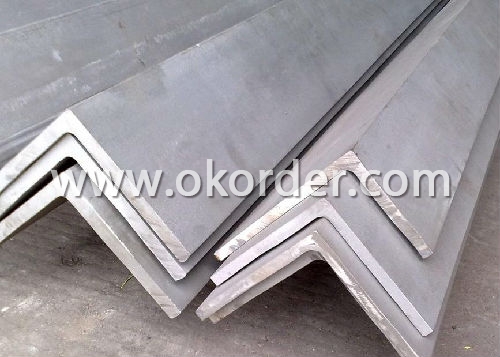
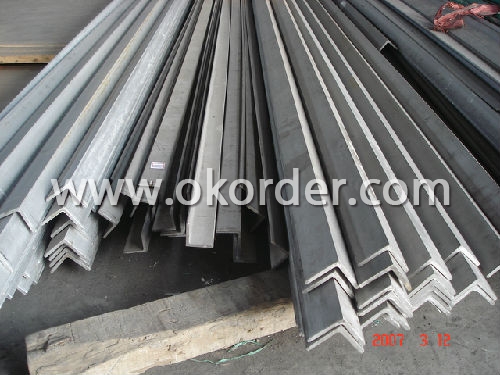
- Q:What are the toughness properties of stainless steel angles?
- Stainless steel angles exhibit excellent toughness properties due to their high strength, ductility, and resistance to cracking or breaking under stress. This makes them suitable for various applications that require structural stability and durability.
- Q:How does stainless steel angle perform in acidic environments?
- Stainless steel angle performs exceptionally well in acidic environments due to its high corrosion resistance properties. The presence of chromium in stainless steel helps to form a passive oxide layer on the surface, which acts as a protective barrier against acids. This makes stainless steel angle an ideal choice for applications exposed to acidic conditions, as it remains durable and long-lasting.
- Q:How do you calculate the section modulus of stainless steel angles?
- To calculate the section modulus of stainless steel angles, you need to follow a few steps. First, determine the moment of inertia (I) of the angle section. The moment of inertia represents the resistance of the angle section to bending. It can be calculated using the formula: I = (b * h^3) / 12 Where: - I is the moment of inertia - b is the width of the angle section - h is the height of the angle section Next, find the centroid (C) of the angle section. The centroid represents the geometric center of the section. It can be calculated using the formulas: Xc = (b * h^2) / (6 * (2 * h)) Yc = h / 2 Where: - Xc is the x-coordinate of the centroid - Yc is the y-coordinate of the centroid Once you have the moment of inertia and the centroid, you can calculate the section modulus (Z) using the formula: Z = I / (h / 2) The section modulus measures the strength and stiffness of the angle section. It represents the distribution of the section's area around the neutral axis, which is the axis that experiences no tensile or compressive stress during bending. The higher the section modulus, the stronger and stiffer the angle section will be. It is important to note that the section modulus calculation assumes the angle section is symmetric and made of homogeneous material. Additionally, the dimensions of the angle section should be measured accurately for precise calculations.
- Q:How do you calculate the bending resistance for torsion of a stainless steel angle?
- To calculate the bending resistance for torsion of a stainless steel angle, you would need to consider factors such as the angle's geometry, material properties, and applied torque. The bending resistance can be determined using formulas or calculations based on the angle's cross-sectional area, moment of inertia, and the yield strength of the stainless steel. Additionally, it is important to consider any applicable safety factors to ensure the angle can withstand the torsional forces it will be subjected to.
- Q:What are stainless steel angles?
- Stainless steel angles, which are metal bars shaped like the letter L and made from stainless steel, are frequently employed in construction, manufacturing, and engineering fields. This is due to their remarkable endurance, ability to resist corrosion, and overall strength. Stainless steel angles possess a superior resistance to rust, staining, and oxidation, rendering them suitable for use in outdoor and highly moist conditions. They are available in a variety of sizes and thicknesses, allowing for customization in structural support, framing, bracing, and decorative applications. The versatility and dependability of stainless steel angles make them a favored selection in industries that prioritize durability, longevity, and aesthetic appeal.
- Q:How do stainless steel angles resist corrosion?
- Stainless steel angles are able to resist corrosion due to their unique composition and protective oxide layer. The main component of stainless steel is iron, which is combined with other elements such as chromium, nickel, and molybdenum. Chromium, in particular, plays a crucial role in the corrosion resistance of stainless steel angles. When stainless steel angles are exposed to oxygen, a thin and invisible layer of chromium oxide forms on the surface. This oxide layer acts as a barrier, preventing further oxygen from reaching the underlying metal and thus inhibiting the corrosion process. This passive layer is self-repairing, meaning that if it is damaged or removed, it will naturally reform when exposed to oxygen again. The chromium content in stainless steel is typically at least 10.5%, which is what enables it to resist corrosion in various environments, including harsh conditions such as high humidity, saltwater, and chemical exposure. The addition of other alloying elements like nickel and molybdenum further enhances the corrosion resistance of stainless steel angles. In addition to its composition, stainless steel angles also possess other factors that contribute to their corrosion resistance. They have a smooth surface that prevents the accumulation of dirt, moisture, and other corrosive substances. Furthermore, stainless steel angles have excellent mechanical properties, including high strength and ductility, which make them resistant to deformation and cracking under stress. In summary, stainless steel angles resist corrosion due to their composition, particularly the presence of chromium, which forms a protective oxide layer on the surface. This oxide layer acts as a barrier against further corrosion, and the self-repairing nature of stainless steel ensures its long-term resistance to corrosion in various environments.
- Q:What are the different finishes available for stainless steel angle?
- There are several different finishes available for stainless steel angle. These finishes are applied to the surface of the stainless steel to enhance its appearance, protect it from corrosion, and provide various levels of reflectivity. 1. Mill Finish: This is the standard finish that comes straight from the mill. It has a dull, gray appearance and is not polished or buffed. 2. Polished Finish: A polished finish is achieved by using abrasive materials to remove imperfections and create a smooth and shiny surface. This finish is commonly used for decorative applications where a high level of reflectivity is desired. 3. Brushed Finish: A brushed finish is achieved by using a wire brush or abrasive pad to create a textured, linear pattern on the surface of the stainless steel. This finish is often used in architectural and industrial applications to hide scratches and provide a more uniform appearance. 4. Satin Finish: A satin finish is similar to a brushed finish but has a smoother and more refined appearance. It is achieved by using a finer abrasive material or a Scotch-Brite pad to create a soft, matte surface. 5. Bead Blast Finish: A bead blast finish is achieved by bombarding the surface of the stainless steel with tiny glass beads or ceramic particles at high pressure. This creates a uniform, matte finish with a slightly rough texture. 6. Mirror Finish: A mirror finish is the most reflective and shiny finish available for stainless steel angle. It is achieved by polishing the surface to a high degree of smoothness and clarity. This finish is often used in decorative applications where a highly reflective surface is desired. Each of these finishes offers a unique aesthetic and can be chosen based on the desired look and functionality of the stainless steel angle.
- Q:What are the different types of stainless steel angles profiles used in interior design?
- There are several types of stainless steel angle profiles commonly used in interior design, including L-shaped angles, C-shaped angles, and T-shaped angles. These profiles are often used for various purposes such as framing, decorative accents, and as structural elements in furniture and fixtures.
- Q:What are the different types of surface finishes for perforated stainless steel angles?
- Perforated stainless steel angles offer a range of surface finishes to choose from. Here are some popular options: 1. Mill Finish: This is the standard finish straight from the mill. It has a smooth yet dull appearance, with possible minor imperfections. 2. Brushed Finish: By brushing the surface with a wire brush, a textured satin-like look is achieved. This finish effectively conceals scratches and imperfections. 3. Polished Finish: To create a smooth, reflective appearance, the stainless steel angle is polished. It is commonly used for decorative purposes, lending a luxurious touch. 4. Powder Coated Finish: Applying a colored powder coating to the surface not only provides color but also extra protection against corrosion and wear. 5. Galvanized Finish: By galvanizing the stainless steel angle, a layer of zinc is added, offering exceptional resistance to corrosion. This finish is often preferred for outdoor or marine applications. 6. Anodized Finish: Through anodization, a thin and protective oxide layer is formed on the surface. This finish enhances appearance, improves corrosion resistance, and can be dyed in various colors. These examples demonstrate the diverse range of surface finishes available for perforated stainless steel angles. The choice of finish depends on the specific application and desired aesthetic outcome.
- Q:What are the UV resistance properties of stainless steel angle?
- Due to its composition and surface finish, stainless steel angle exhibits exceptional resistance to UV rays. The presence of chromium in stainless steel leads to the formation of a protective oxide layer when exposed to oxygen. This oxide layer acts as a shield against UV radiation, preventing the steel from corroding or deteriorating when subjected to prolonged sunlight exposure. Moreover, stainless steel angle often features a polished or brushed surface finish, which further enhances its ability to resist UV rays. The smooth surface reduces the likelihood of dirt, dust, or other particles accumulating on the steel, thus minimizing any potential impact on its UV resistance. The UV resistance of stainless steel angle is particularly significant in outdoor applications or environments with high levels of sunlight exposure. This property ensures that the material remains durable, long-lasting, and visually appealing over time, as it is able to withstand the damaging effects of UV radiation.
1. Manufacturer Overview |
|
|---|---|
| Location | Jiangsu,China |
| Year Established | 2002 |
| Annual Output Value | Above US$ 8 Million |
| Main Markets | China, East Asia, |
| Company Certifications | ISO9001:2000; |
2. Manufacturer Certificates |
|
|---|---|
| a) Certification Name | |
| Range | |
| Reference | |
| Validity Period | |
3. Manufacturer Capability |
|
|---|---|
| a)Trade Capacity | |
| Nearest Port | Shanghai |
| Export Percentage | 40% |
| No.of Employees in Trade Department | 30 People |
| Language Spoken: | English;Chinese |
| b)Factory Information | |
| Factory Size: | Above 26,000 square meters |
| No. of Production Lines | Above 6 |
| Contract Manufacturing | OEM Service Offered;Design Service Offered |
| Product Price Range | Average |
Send your message to us
Best Quality for Equal Stainless Steel Angles
- Loading Port:
- China Main Port
- Payment Terms:
- TT or LC
- Min Order Qty:
- 1 Ton m.t.
- Supply Capability:
- 500 Tons Per Month m.t./month
OKorder Service Pledge
OKorder Financial Service
Similar products
New products
Hot products
Related keywords
